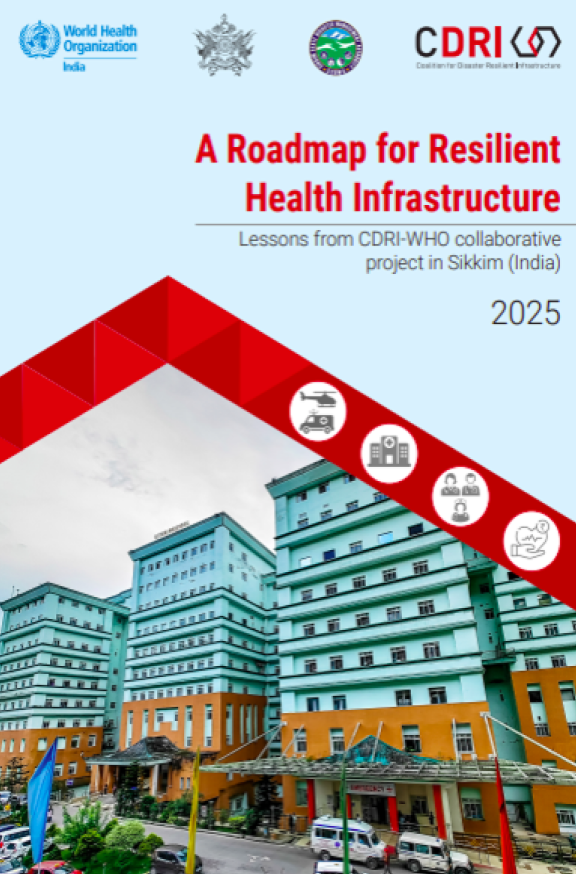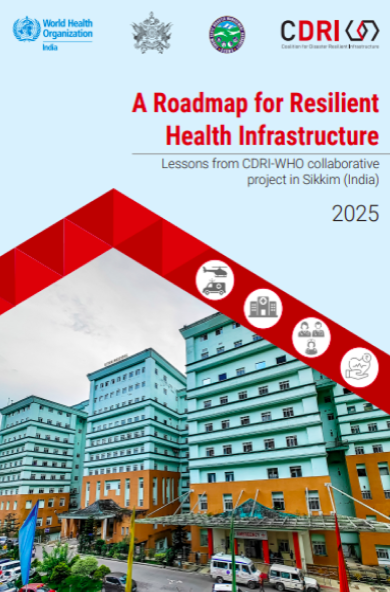Lessons from CDRI-WHO collaborative project in Sikkim (India)
This summary document captures CDRI–WHO project in Sikkim, which aimed to strengthen health infrastructure resilience against disasters and climate risks. Sikkim, prone to earthquakes, floods, and GLOFs, faced vulnerabilities across 178 health facilities.
The project developed a comprehensive Resilient Health Infrastructure (RHI) Framework covering hospital operations, building safety, critical services, community systems, and governance. Key actions included capacity-building workshops, mock drills, and the creation of a Hospital Disaster Risk Management & Resilience Plan (HDRM&RP). Post-2023 GLOF, the framework guided effective response and recovery. The initiative emphasized systemic integration, policy reforms, and multi-sectoral coordination. Sikkim received national recognition for fire safety and aims to scale resilience measures.
CDRI plans to expand the RHI model globally, supported by a Community of Practice and technical partnerships.
Key points
- Sikkim’s hospitals face high disaster risks and infrastructure vulnerabilities.
- CDRI–WHO developed a framework for resilient health infrastructure planning.
- Capacity-building workshops trained over 500 stakeholders across six districts.
- Hospital Disaster Risk Management Plan adopted for the state referral hospital.
- Critical services like power, water, and transport are integrated into the resilience strategy.
- Post-GLOF response validated the project’s impact and accelerated resilience adoption statewide.






